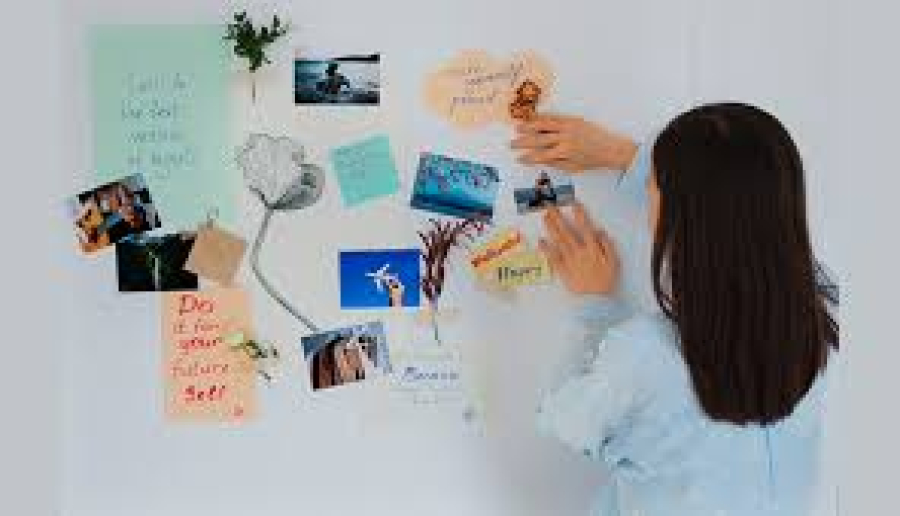How to Create Impactful Presentation Boards
Creating impactful presentation boards is an essential skill for freelancers working in design, architecture, interior planning, and other creative industries. A well-crafted presentation board does more than just showcase your project — it communicates your ideas clearly, convinces clients of your vision, and can even help you win new contracts. Whether you're pitching to a client or submitting to a design competition, knowing how to organize and present your concepts visually is crucial for success in the freelance space.
Long Description
1. What Is a Presentation Board?
A presentation board is a visual display that communicates the essential elements of a project — from concept to execution. It includes drawings, plans, renderings, mood boards, material selections, color palettes, diagrams, and text that guide the viewer through your creative process.
Freelancers use presentation boards in many industries:
Architects use boards to illustrate site plans and building designs.
Interior designers display mood boards, layouts, and furniture concepts.
Graphic designers show branding concepts or campaign storyboards.
Product designers visualize prototyping stages and technical specifications.
2. Why Presentation Boards Matter for Freelancers
For freelancers, your work often speaks before you do. Presentation boards:
Help communicate complex ideas simply.
Serve as a pitch tool to potential clients or employers.
Build credibility and showcase your design thinking.
Set you apart from others in competitive freelance environments.
3. Key Elements of an Impactful Presentation Board
To make your board compelling and professional, focus on the following core elements:
a. Clear Visual Hierarchy
Ensure that the most important content stands out first — such as your final rendering or design proposal. Use larger font sizes, positioning, and whitespace strategically.
b. Consistent Layout and Alignment
Keep alignment clean. Use grids to ensure text, images, and diagrams are placed neatly. Consistency builds trust and shows professionalism.
c. High-Quality Visuals
Use high-resolution images and sharp graphics. Pixelated visuals undermine credibility.
d. Minimal Text, Maximum Impact
Keep explanations short and precise. Use bullet points and avoid large blocks of text.
e. Cohesive Color Scheme
Limit your color palette to 3–4 complementary colors. Colors should reflect the mood and brand of your project.
f. Typeface Consistency
Use no more than two fonts — one for headers and one for body text. Maintain the same font sizes across similar content areas.
4. How to Plan Your Presentation Board Layout
Before designing, sketch a rough layout. Here’s a common structure used by professionals:
Top Left: Title and brief description
Top Right: Concept or inspiration images
Middle: Main visuals (renderings, drawings, photos)
Bottom: Diagrams, annotations, and technical details
Footer: Your contact info, logo, or branding
Always design with your audience in mind. Are you submitting to a competition, presenting to a client, or adding it to your portfolio? Each purpose may require different emphasis and design direction.
5. Tools for Creating Presentation Boards
Freelancers can choose from various tools based on their industry and skill level:
Adobe InDesign: Best for layout-heavy designs.
Adobe Illustrator: Great for vector-based illustrations and flexible design.
Canva or Figma: Ideal for easy drag-and-drop interfaces with templates.
Photoshop: Perfect for editing visuals or creating custom graphics.
AutoCAD / Revit / SketchUp: Useful for architectural and 3D renderings.
Ensure that the tool you choose allows for high-resolution exports suitable for printing or digital presentation.
6. Tips to Make Your Boards Stand Out
a. Start with a Strong Concept
Every great board begins with a clear concept. What story are you telling? How does your design solve a problem or enhance the environment?
b. Use White Space Effectively
White space improves readability. Don't overcrowd your board — allow elements to breathe.
c. Visual Storytelling Is Key
Create a narrative that flows from top to bottom or left to right. The viewer should easily understand the journey of your project.
d. Include a Title Block
Professional boards include a title block with your name, date, project title, and contact details.
e. Include Process Work (When Relevant)
Sketches, drafts, and diagrams help clients understand how you arrived at your solution — this adds value.
7. Common Mistakes to Avoid
Overloading with information: Avoid clutter — be selective with what you include.
Inconsistent styles: Don’t mix different design styles, fonts, or themes.
Ignoring scale and dimensions: Make sure your layout fits the standard board sizes and printing guidelines.
Lack of proofreading: Spelling and grammar errors reduce credibility.
8. Presentation Boards for Digital vs Physical Use
Digital Boards:
Ideal for client pitches, emails, or digital portfolios.
Optimize for screen viewing (RGB colors, 72–150 dpi).
Keep file sizes manageable for easy sharing.
Printed Boards:
Typically used in client meetings, architectural juries, or exhibits.
Use CMYK color mode and 300 dpi resolution.
Choose the right board size (A2, A1, or custom based on project guidelines).
9. Portfolio vs. Project Boards
Project-Specific Boards:
These are designed for one presentation and focus solely on that project’s narrative.
Portfolio Boards:
These are part of a collection, showcasing your capabilities over multiple projects. Ensure a uniform style across all boards.
10. Freelance Branding with Presentation Boards
Your board should reflect your personal brand. This includes:
Logo or personal branding colors
Typography that matches your aesthetic
A consistent format that matches other client-facing materials
When a potential client sees your board, it should instantly feel like “your work.” This consistency improves brand recall and makes a lasting impression.
11. Industry Examples of Effective Boards
Architecture:
Site plans with top-view renderings
3D massing models and elevations
Sustainability metrics and usage patterns
Interior Design:
Mood boards with textures and color palettes
Room renderings and lighting simulations
Furniture layouts and sample material specs
Product Design:
Sketches, exploded views, and prototypes
Functionality infographics
Material studies and ergonomic testing
Marketing Design:
Campaign flow, buyer personas, and brand guidelines
Print and digital sample visuals
Message hierarchy and ad breakdowns
12. Final Checklist Before Submission or Presentation
Are all visuals clear and high resolution?
Is text readable from a distance (for print)?
Have you proofread for grammar and clarity?
Are colors accurately represented in print or digital?
Is your branding clearly visible?
Does the board flow logically and tell a story?
Conclusion
Creating impactful presentation boards is a skill that can define your freelance success, especially in visual industries like architecture, design, and branding. By focusing on visual clarity, layout, consistency, and storytelling, you can craft boards that not only impress clients but also reflect your professional identity. Make each board an extension of your creativity — and let your work speak louder than words.


 by Emily
by Emily




